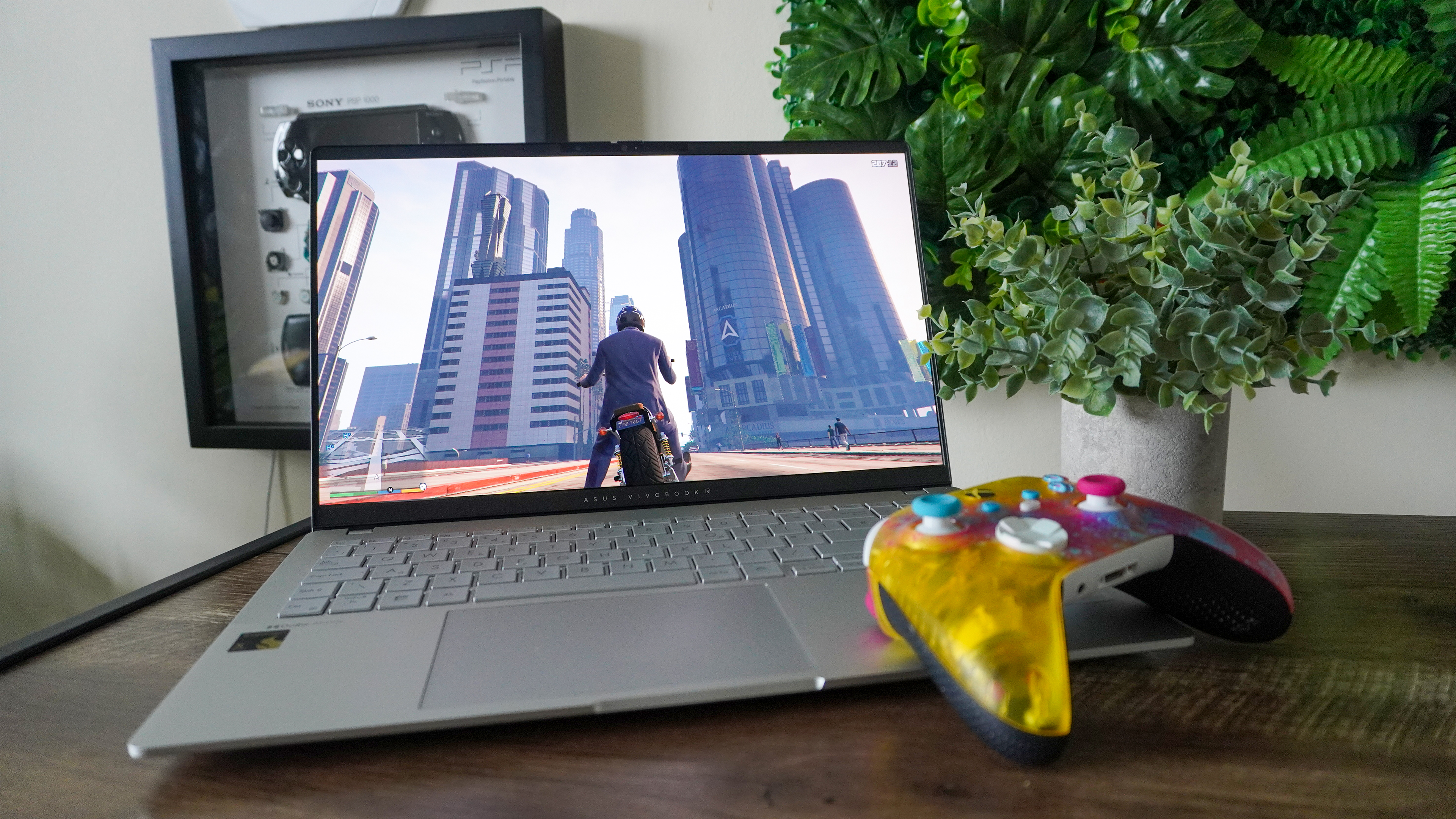
Let me be clear from the outset — any laptop with only integrated graphics is not supposed to be a stellar gaming laptop. Sure, it may do a little casual play here and there, but anything AAA running at ultra settings with a 100+ FPS smoothness is just not its goal.
With that in mind though, I’ve been testing the Asus Vivobook S 15 with Snapdragon X Elite for about a week now — which is one of the first Microsoft CoPilot+ PCs — and I have to say I’m impressed. Sure, gaming may not be its purpose, but it does so pretty damn well — even across some titles I didn’t expect it to do so.
Provided you temper your expectations that this doesn’t have a dedicated GPU (though Qualcomm says it is possible to pack an X Elite machine with an RTX 40-series card, we haven’t seen that come to fruition yet), you can still get a really fun gaming experience out of this.
Let’s go through just some of the playtime I had, along with some benchmarks and my recommended settings to get the most out of this.
Snapdragon X Elite gaming performance: General recommended settings
Now when I say “general,” this is a good set of ground rules to follow if you want to find an ideal balance between fidelity and smoothness. There are other things to take into account here, such as whether the game runs on Arm for example (here’s a list of games tested to run well on this new kind of silicon for Windows), but if you aim for these, you should be fine.
- Resolution: 1080p (downgrade to 720p if you are facing any stuttering)
- Texture details: Low/Medium (experiment with these to get a balance of low to medium graphics settings that work best for you)
- Frame rate target: 60 FPS (if you’re playing a game that struggles to get this, go for 30 FPS)
Cyberpunk 2077

- Avg FPS: 30
- Resolution: 2880 x 1620
- AMD FidelityFX Super Res 2.1: Performance
- Texture Quality: Low everything
Let’s start with a real test for it. Cyberpunk 2077 is capable of melting even the most extreme of machines at its highest fidelity and ray tracing settings, but luckily, CD Projekt Red has made its engine very adaptable to whatever power your hardware possesses.
And for the Snapdragon X Elite, Cyberpunk runs at a pretty rock solid 30 FPS in even the most stressing moments of hectic combat. Details are relatively crisp, but you do notice a short distance of rendering them in (something you’ll notice across all three of the games I played).
Grand Theft Auto V

- Avg FPS: 57.5
- Resolution: 1080p
- Texture Quality: Low/Medium
GTA V was the most surprising to me. By default, the game selected some low settings, but mostly opted for medium. I chuckled at the confidence, but when firing up the benchmark, I was shocked.
At a FHD resolution, the game was oh so smooth with only a couple of frame stutters to load in effects — identical to what I’d see on the integrated graphics of any Intel or AMD-based laptop. To say it could pull this off while being forced through the Prism emulation is mightily impressive.
F1 22

- Avg. FPS: 45
- Resolution: 1080p
- Texture Quality: Low
- AMD Fidelity FX: Sharpening
F1 2022 was a challenge for the S 15. Not to the point that it was rendered completely unplayable, but there were some issues with screen tearing and some rough texture detail pop-in present here.
But if you just want a quick racing game to jump into while you’re out and about, this proves its possible. We just now wait with fingers crossed for an Arm-optimized version for the car enthusiasts to get their fix.
Bottom line

So realistically, these numbers are the same as what you’d find on similarly-specced x86 laptops. Why are they so special when it comes to an Arm processor like the Snapdragon X Elite?
Well, it comes down to two reasons. First, it shows that the Prism emulation layer for apps not built for this chip standard is the real deal. It’s not perfect, as there are some games I tried that have a hard block coded into the software to stop Arm chips from running them. Not only that, but some games just did not open like Forza Horizon 5.
And on top of that, there is definitely a sacrifice of performance as the silicon works hard to translate the code of said game or app on the fly. With all these stresses, though, this manages to match it’s classic competitors.
But second, and most importantly, you’re getting those battery life gains and improved thermal management that comes with X Elite. For example, you can absolutely play GTA V at 60 FPS on the Intel Core Ultra 9-armed Huawei MateBook X Pro at the same graphical fidelity, but the battery lasts about as long as this sentence (or to not be so dramatic, I got 45 minutes out of it).
Meanwhile, the X Elite-armed Vivobook S 15 lasted two hours of gameplay time with the same settings, and the fans didn’t kick up anywhere near as loud as Huawei’s laptop did. So the main thing I want you to take away from this is not that gaming is possible, but that the GPU in here is capable of it while not being a power hungry freak. This thing is seriously good.







